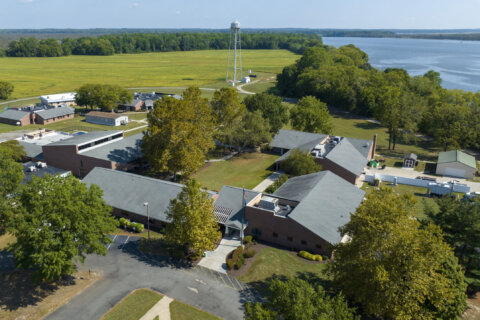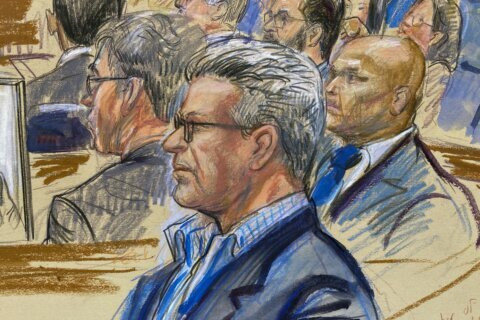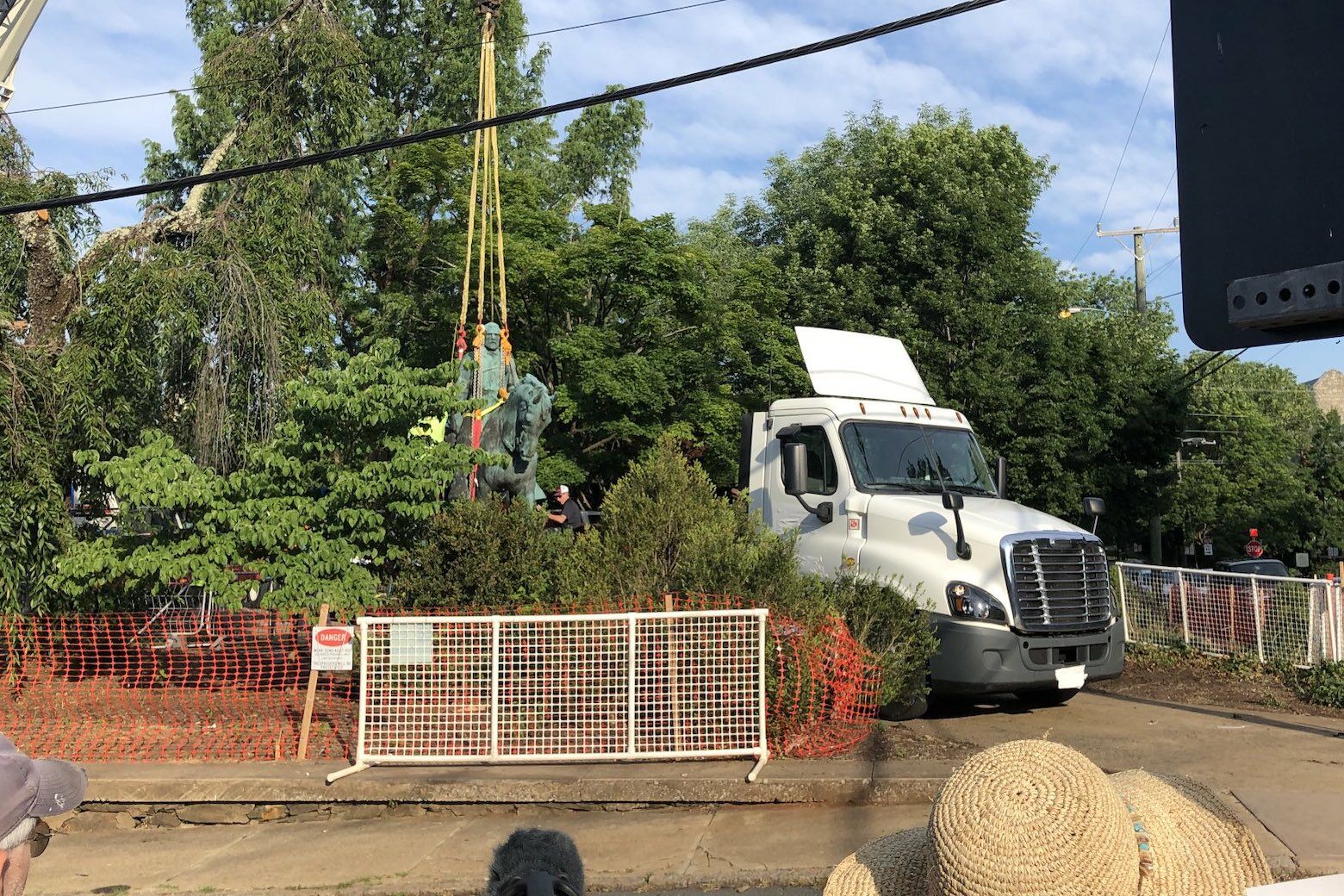
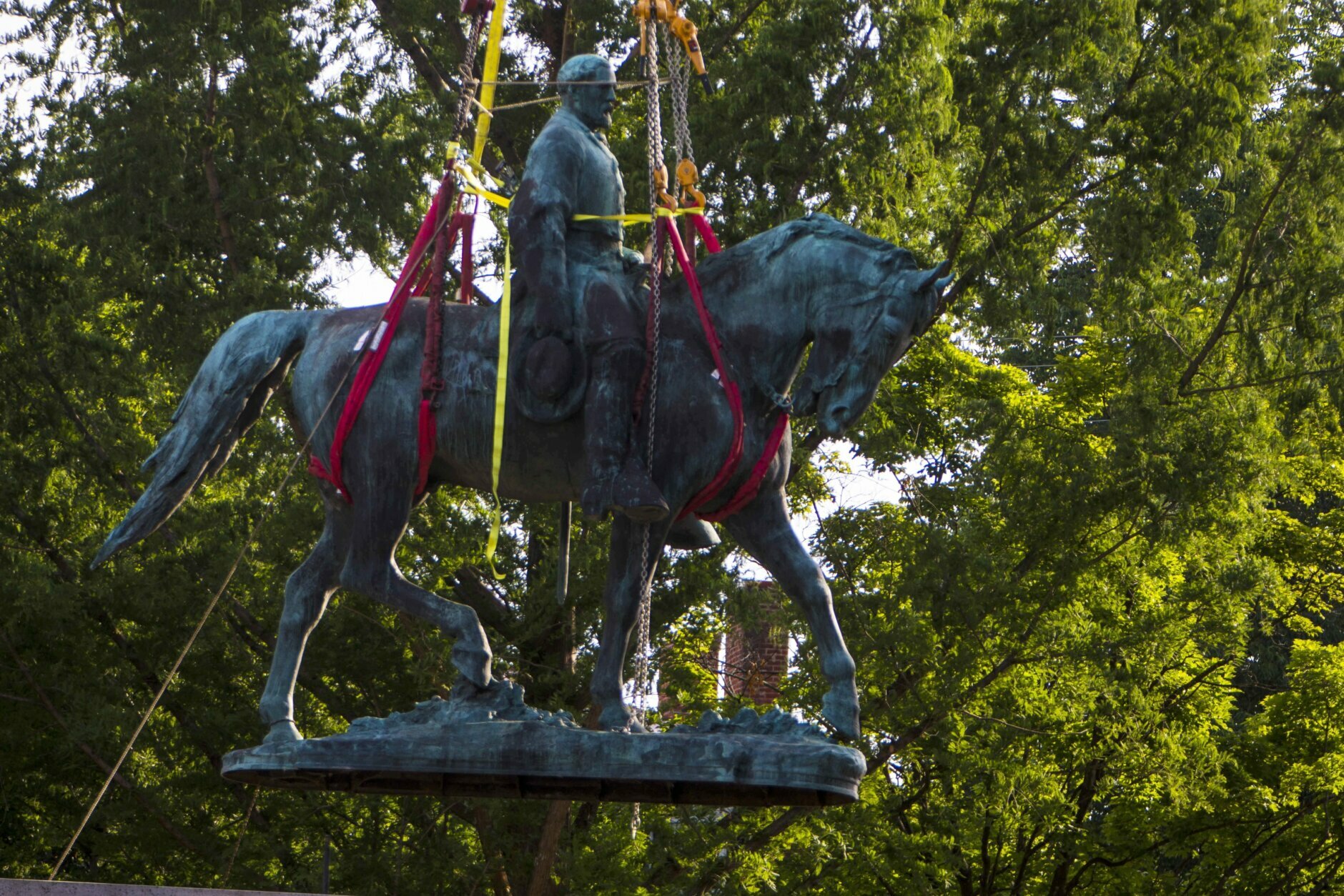
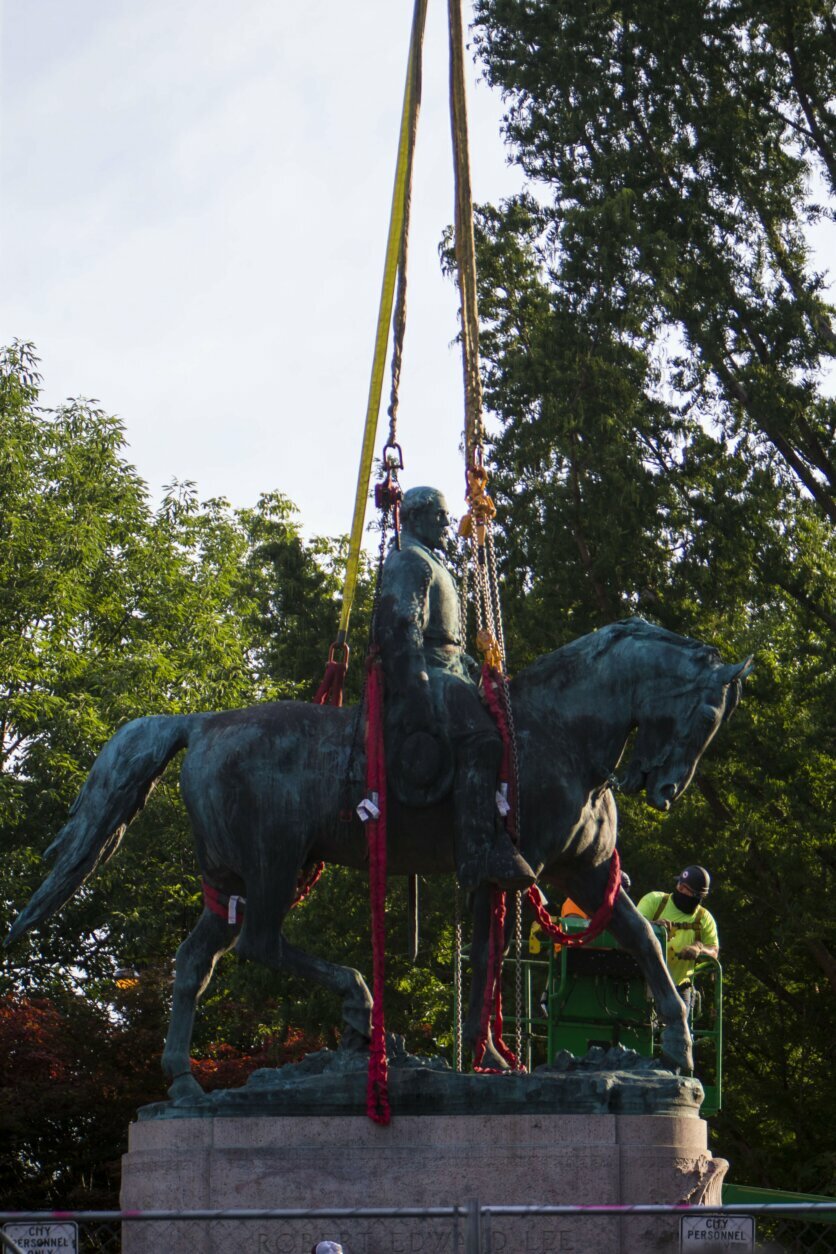
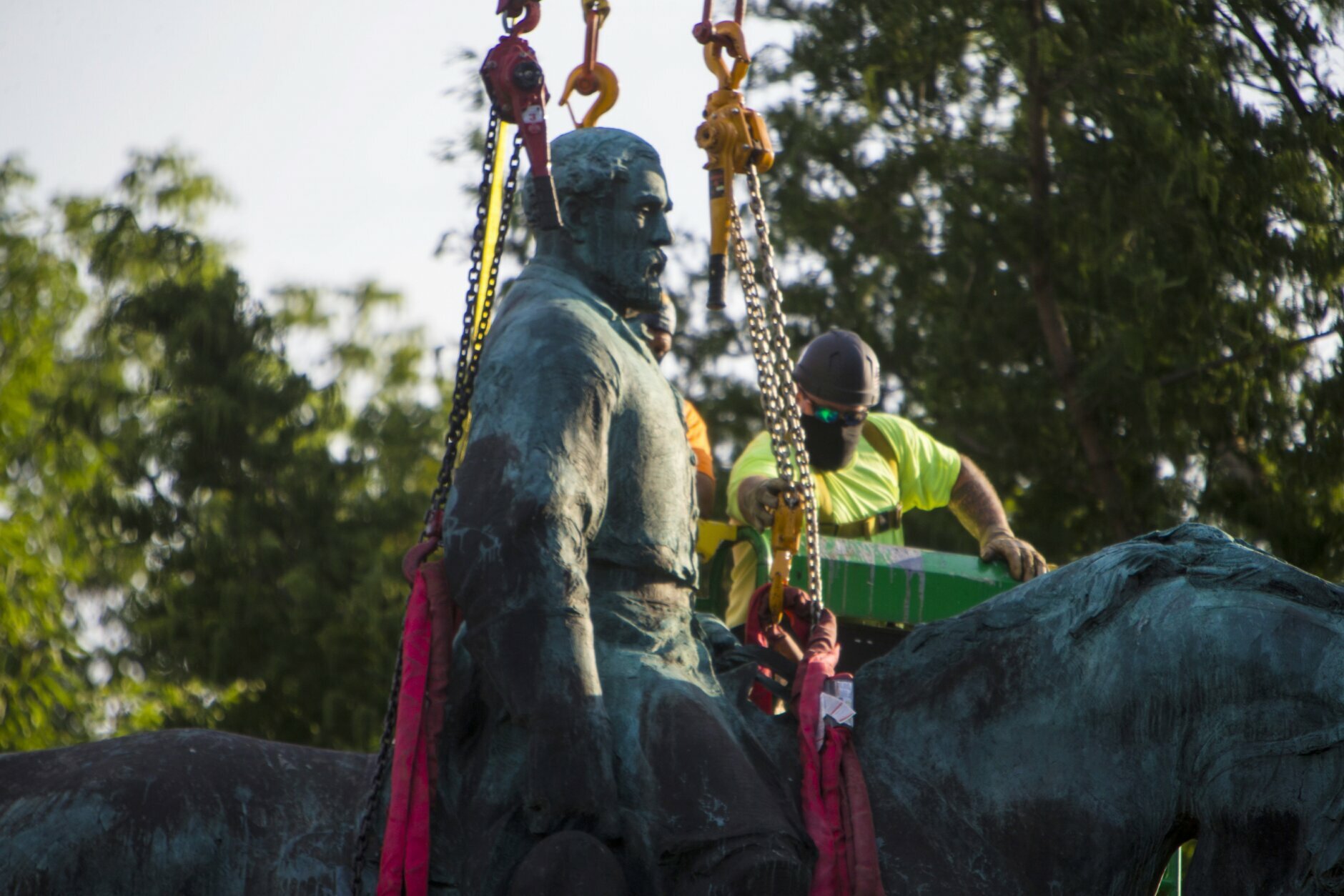
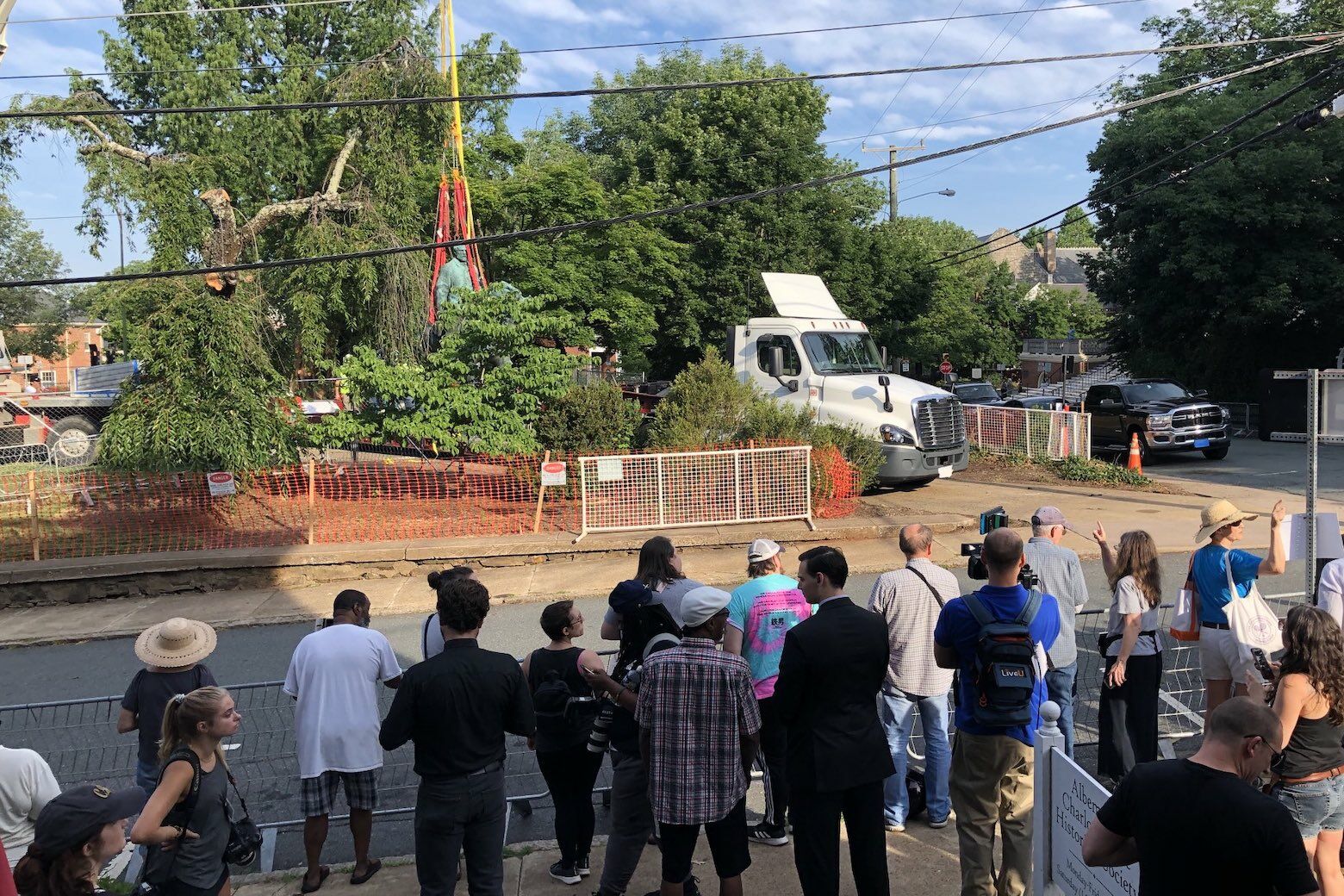
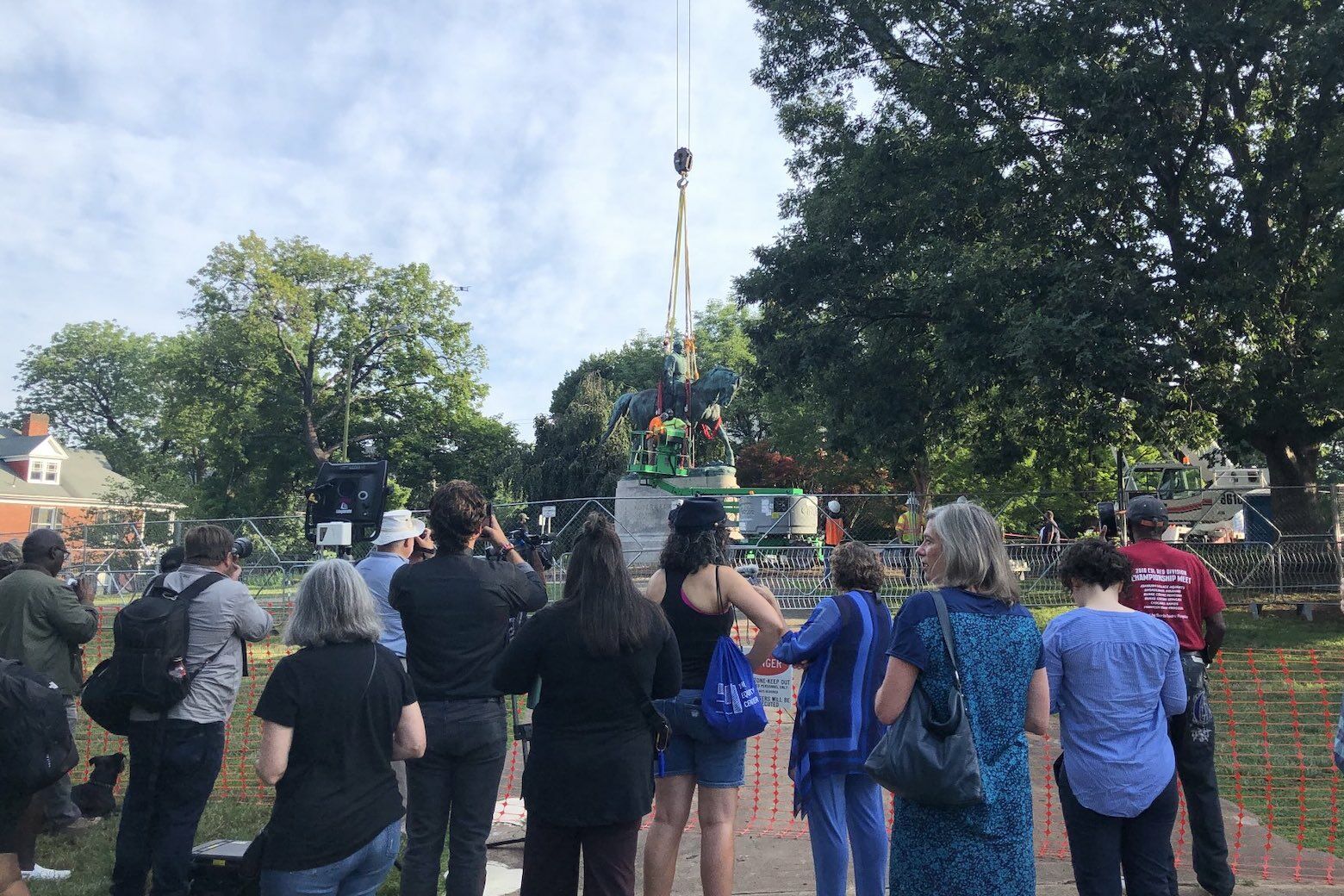
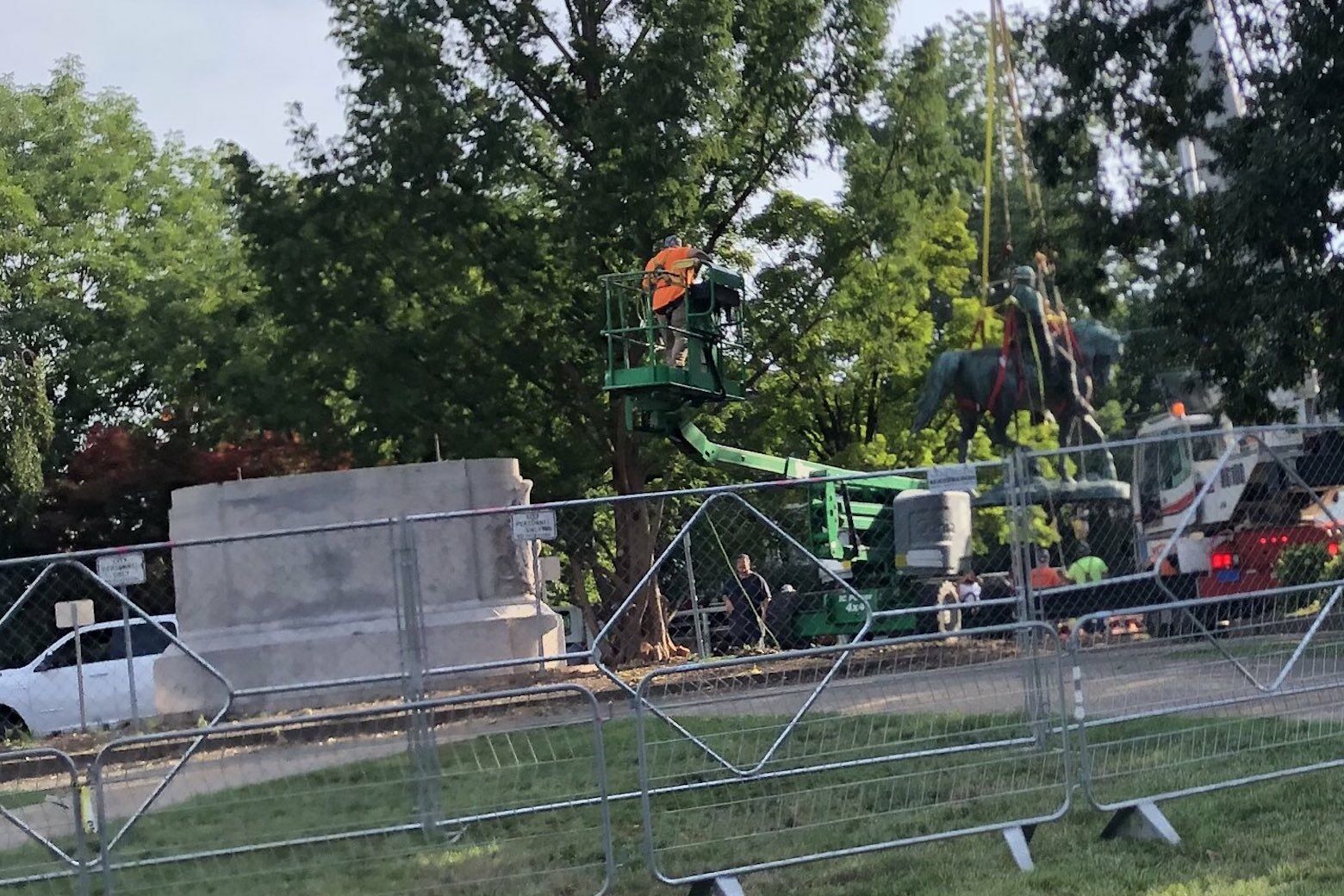
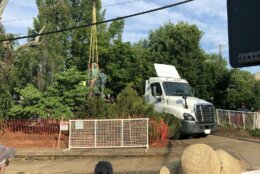
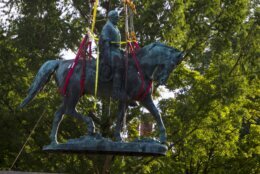
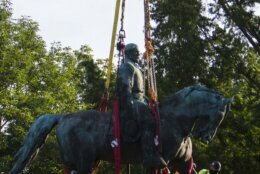

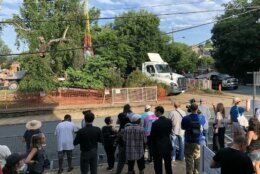
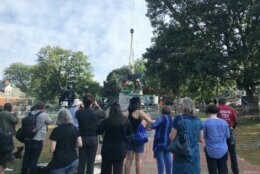
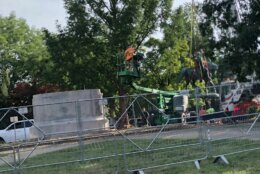
CHARLOTTESVILLE, Va. (AP) — A statue of Confederate Gen. Robert E. Lee was hoisted away from its place of prominence in Charlottesville on Saturday and carted off to storage, years after its threatened removal became a rallying point for white supremacists and inspired their violent 2017 rally that left a woman dead and dozens injured.
“Somebody just put a Tweet up that said FREE – ha – Free and clean air. And, I think that’s the mood that the city will be feeling about them and those parks that they were in,” said Michael Signer, who served as the Mayor of Charlottesville during deadly protests there in 2017. “What was astonishing, then, was how the statues came to be the central hub for today’s violent White Nationalism.”
Signer believes Charlottesville foreshadowed an era culminating with the attack on the U.S. Capitol that included insurrectionists bearing confederate battle flags.
Work to remove the Lee statue began early Saturday morning and crews later removed a statue of Gen. Thomas “Stonewall” Jackson.
Scores of spectators lined the blocks surrounding the park where the Lee statue had stood since the 1920s, and a cheer went up as it was lifted off the pedestal. There was a visible police presence, with streets blocked off to vehicular traffic by fencing and heavy trucks.
Charlottesville Mayor Nikuyah Walker gave a speech in front of reporters and observers as the crane neared the monument.
“Taking down this statue is one small step closer to the goal of helping Charlottesville, Virginia, and America, grapple with the sin of being willing to destroy Black people for economic gain,” Walker said.
Charlottesville City Councilmember Lloyd Snook said he was glad to see real action taken regarding the statues, and that he felt the prolonging of their removal had served as a distraction to other important work the city could have been doing.
The removal of the statues follows years of contention, community anguish and litigation. A long, winding legal fight coupled with changes in a state law that protected war memorials had held up the removal for years.
Saturday’s work also came nearly four years after violence erupted at the infamous “Unite the Right” rally. Heather Heyer, a peaceful counterprotester, died in the violence, which sparked a national debate over racial equity, further inflamed by former President Donald Trump’s insistence tha t there was “blame on both sides.”
The work seemed to proceed smoothly and fairly easily as couples, families with small children and activists looked on from surrounding blocks. The crowd intermittently chanted and cheered as the workers made progress. Music wafted down the street as a pair of musicians played hymns from a church near the Lee statue.
There were at least a handful of opponents of the removal, including a man who heckled the mayor after her speech, but no visible, organized protester presence.
Ralph Dixon, a 59-year-old Black man born and raised in Charlottesville, was documenting the removal work Saturday morning, a camera around his neck.
Dixon said he was brought to the park where the Lee statue stood as a school-aged child.
“All the teachers, my teachers anyway, were always talking about what a great person this was,” he said.
He said his understanding of Lee’s legacy and the statue’s message evolved as he became an adult. He said it was important to consider the context of the Jim Crow era during which the statue was erected and said especially after Heyer’s death there was no reason the statue should stay.
“It needed to be done,” he said.
Only the statues, not their stone pedestals, were removed Saturday. They will be stored in a secure location until the City Council makes a final decision about what should be done with them. Under state law, the city was required to solicit parties interested in taking the statues during an offer period that ended Thursday. It received 10 responses to its solicitation.
A coalition of activists commended the city for moving quickly to take the statues down after the offer period ended. As long as the statues “remain standing in our downtown public spaces, they signal that our community tolerated white supremacy and the Lost Cause these generals fought for,” the coalition called Take ’Em Down Cville said.
Jim Henson, who lives in nearby Barboursville, said Saturday he came to witness a “historic” event. He said he didn’t have a strong personal opinion on the issue of Confederate monuments but he thought Charlottesville was happy to see the saga come to a conclusion.
“Good atmosphere, good vibes, good energy,” he said.
The most recent removal push focused on the Lee monument began in 2016, thanks in part to a petition started by a Black high school student, Zyahna Bryant.
“This is well overdue,” said Bryant, who’s now a student at the University of Virginia.
“No platform for white supremacy. No platform for racism. No platform for hate.”
Kristin Szakos, a former Charlottesville City Council member who watched the statues’ removal, said that “folks in this community have been trying to get these statues down for a hundred years.”
She added: “I think that we’re finally ready to be a community that doesn’t telegraph through our public art that we are pretty fine with white supremacy.”
Also removed Saturday was a statue depicting Sacagawea, and explorers Meriwether Lewis and William Clark, which has been criticized for a depiction of the Native American guide and interpreter some view as subservient and weak.
On Sunday, a fourth statue removed in Charlottesville was just as important as the others, according to a professor from the University of Virginia who says they really can’t be separated in history.
“They went out at roughly the same time, the gift of the same man,” said John Edwin Mason, an associate professor of history at UVA
He said the removal of the George Clark memorial is so closely tied to the statues of Gen. Robert E. Lee, Stonewall Jackson and the statue of Lewis and Clark and Sacagawea that it was appropriate they all came down the same weekend.
“All four were gifts to the city from Paul Goodloe McIntire,” Mason said. “That all sounds really admirable, that Goodloe should give all these things to the city. But in doing so he was reinforcing both the ideology and practice of segregation and white supremacy.”
He said while they should be removed, they should still be accessible to students and used in teaching history.
“It’s our job to wrestle with these difficult things,” Mason said.
WTOP’s Kristi King, Dick Uliano, Mike Murillo and Valerie Bonk contributed to this report.
Copyright © 2024 The Associated Press. All rights reserved. This material may not be published, broadcast, written or redistributed.

